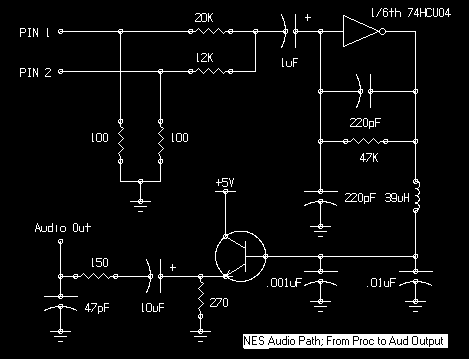skrasms
Well-known member
This has come up in a couple circuits I've seen, and I'm really curious about the “how” part of it. It seems that logic inverters can be used in place of opamps in lo-fi designs. For example, the inverter in this circuit:

The signals from pins 1 and 2 are audio signals, leading to the 7404 circuit to do summation and filtering. I imagine the inverter is behaving like an opamp with a grounded V+ terminal and negative feedback. How well does this actually work?

The signals from pins 1 and 2 are audio signals, leading to the 7404 circuit to do summation and filtering. I imagine the inverter is behaving like an opamp with a grounded V+ terminal and negative feedback. How well does this actually work?


































